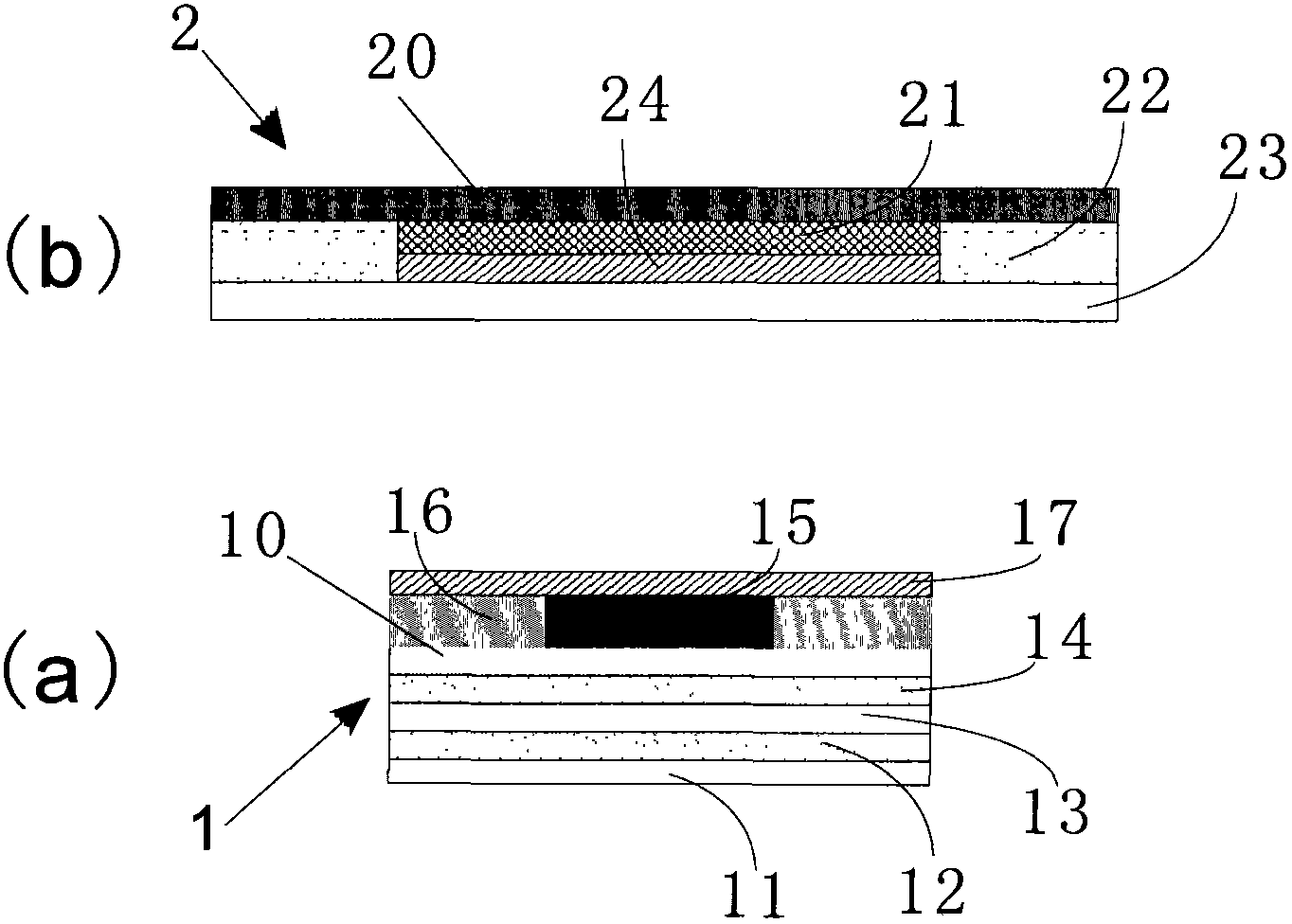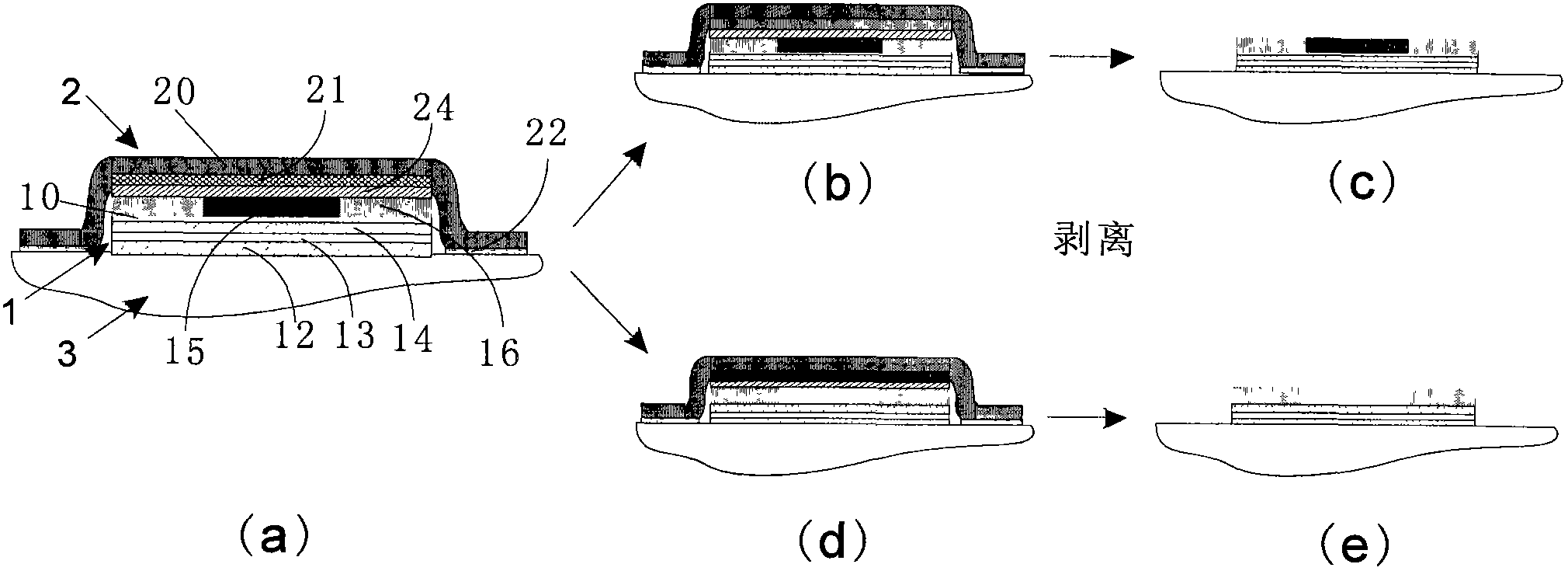Method for monitoring accumulative heating quantity of heat reactive articles and indicator used by method
A heat-sensitive and heat-receiving technology, applied in the field of materials, which can solve problems such as color change speed delay
- Summary
- Abstract
- Description
- Claims
- Application Information
AI Technical Summary
Problems solved by technology
Method used
Image
Examples
Embodiment 1
[0239] Use dye A as the thermal material of the time-temperature indicator, quantitatively print 2% dye A (solvent is ethyl acetate, the amount of dye A per square centimeter is about 200ug) on ordinary A4 paper as the indicator functional layer, Put the commercially available self-adhesive paper that can effectively absorb dye A on top of dye A, and make the self-adhesive face the dye layer, and then use a dye-impermeable sealing film to seal the indicating function layer and the self-adhesive as the adsorption function layer , and place the sealed sample at a constant temperature of 25°C. After leaving for a specific time, observe the color of the recording function indicating the layer. image 3 It is the color record of the indicator after it is placed at a constant temperature of 25°C for 0-105 days. After the dye A was completely volatilized, there was almost no dye trace left under the naked eye, indicating that the functional parts almost returned to the original co...
Embodiment 2
[0241] Figure 4a with Figure 4b It is the method of referring to Example 1, using dye A as the color difference ΔE of the time temperature indicator made of thermosensitive functional material at different temperatures * ab changes over time t. Color difference ΔE* ab =10 as the end point of discoloration, the discoloration time and speed of the indicator can be obtained, and then the activation energy corresponding to the change process can be deduced from the Arrhenius equation to be about 97.4kJ / mol ( Figure 5 ), so as to obtain the characteristic parameters of the indicator color change process temperature effect. This activation energy can well cover the inactivation activation energy range of 73.6-109 kJ / mol of polio vaccine reported in the literature, and can also cover the inactivation activation energy range of some other vaccines.
[0242] Image 6 It is a label designed for a hepatitis B vaccine using the dye, and the color change response of the TTI of the...
Embodiment 3
[0244] By adjusting the amount of heat-sensitive functional material printed per unit area of the indicator function indication part, the total time for the indicator to change color can be regulated, which can be regulated by adjusting the amount of ink or the concentration of the ink during the printing process.
[0245] Figure 7 Dye A is used as the heat-sensitive functional material, referring to the method of Example 1, using different ink concentrations and the same amount of ink to obtain the initial chromaticity value of the indicator, and the color change process at the same temperature. The time when the indicator reaches the end point has a linear relationship with the amount of heat-sensitive functional material printed per unit area ( Figure 8 ).
PUM
| Property | Measurement | Unit |
|---|---|---|
| melting point | aaaaa | aaaaa |
| melting point | aaaaa | aaaaa |
| melting point | aaaaa | aaaaa |
Abstract
Description
Claims
Application Information
 Login to View More
Login to View More - R&D
- Intellectual Property
- Life Sciences
- Materials
- Tech Scout
- Unparalleled Data Quality
- Higher Quality Content
- 60% Fewer Hallucinations
Browse by: Latest US Patents, China's latest patents, Technical Efficacy Thesaurus, Application Domain, Technology Topic, Popular Technical Reports.
© 2025 PatSnap. All rights reserved.Legal|Privacy policy|Modern Slavery Act Transparency Statement|Sitemap|About US| Contact US: help@patsnap.com



